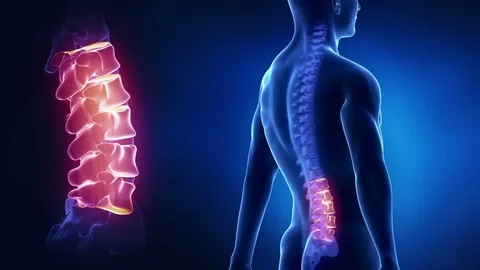The anatomy and issues of the sacral spine play a crucial role in understanding how the lower back supports the body’s structure and movement. Located at the base of the spine, the sacrum connects the lumbar region to the pelvis, creating stability and balance for daily movement. When problems occur in this area, they can lead to chronic pain, mobility limitations, and posture-related challenges that require attention from a Spine Specialist.
The Anatomy of the Sacral Spine
The sacral spine, or sacrum, is a triangular bone composed of five fused vertebrae (S1–S5). It serves as the foundation of the spinal column, linking the spine to the hip bones (iliac bones) to form the pelvis. This structure supports body weight when standing, walking, or sitting. The sacral foramina (openings on the sacrum) allow nerves and blood vessels to pass through, ensuring proper communication between the spine and the lower body.
Common Issues Affecting the Sacral Spine
Several conditions can affect the sacral spine, causing discomfort and reduced flexibility. Some of the most common include:
- Sacroiliac (SI) Joint Dysfunction – This occurs when the joint connecting the sacrum and pelvis becomes inflamed or misaligned, resulting in pain in the lower back or buttocks.
- Sacralization of the Lumbar Vertebrae – A congenital condition where the lowest lumbar vertebra fuses with the sacrum, altering movement and causing stiffness.
- Degenerative Disc Disease – Age-related wear and tear on the discs between the vertebrae can lead to chronic sacral pain and reduced range of motion.
- Fractures or Trauma – Accidents, falls, or sports injuries can cause sacral fractures, leading to intense pain and limited mobility.
- Nerve Compression – The sacral nerves can become compressed due to disc herniation or inflammation, often resulting in sciatica or numbness in the legs.
When to See a Spine Specialist
If you experience persistent lower back or pelvic pain, consulting a Spine Specialist is essential. These experts can diagnose the root cause using advanced imaging techniques and create tailored treatment plans involving physical therapy, posture correction, and, in severe cases, minimally invasive surgery. Early intervention can prevent long-term complications and improve overall spinal health.
Maintaining a Healthy Sacral Spine
To support your sacral spine and prevent potential issues:
- Maintain good posture when sitting and standing.
- Engage in regular stretching and core-strengthening exercises.
- Avoid lifting heavy objects incorrectly.
- Ensure ergonomic support at work and home.
Final Thoughts
Understanding the anatomy and issues of the sacral spine is essential for maintaining a healthy back and overall mobility. With guidance from an experienced Spine Specialist, you can identify early signs of discomfort and take proactive steps to keep your spine strong and pain-free.
